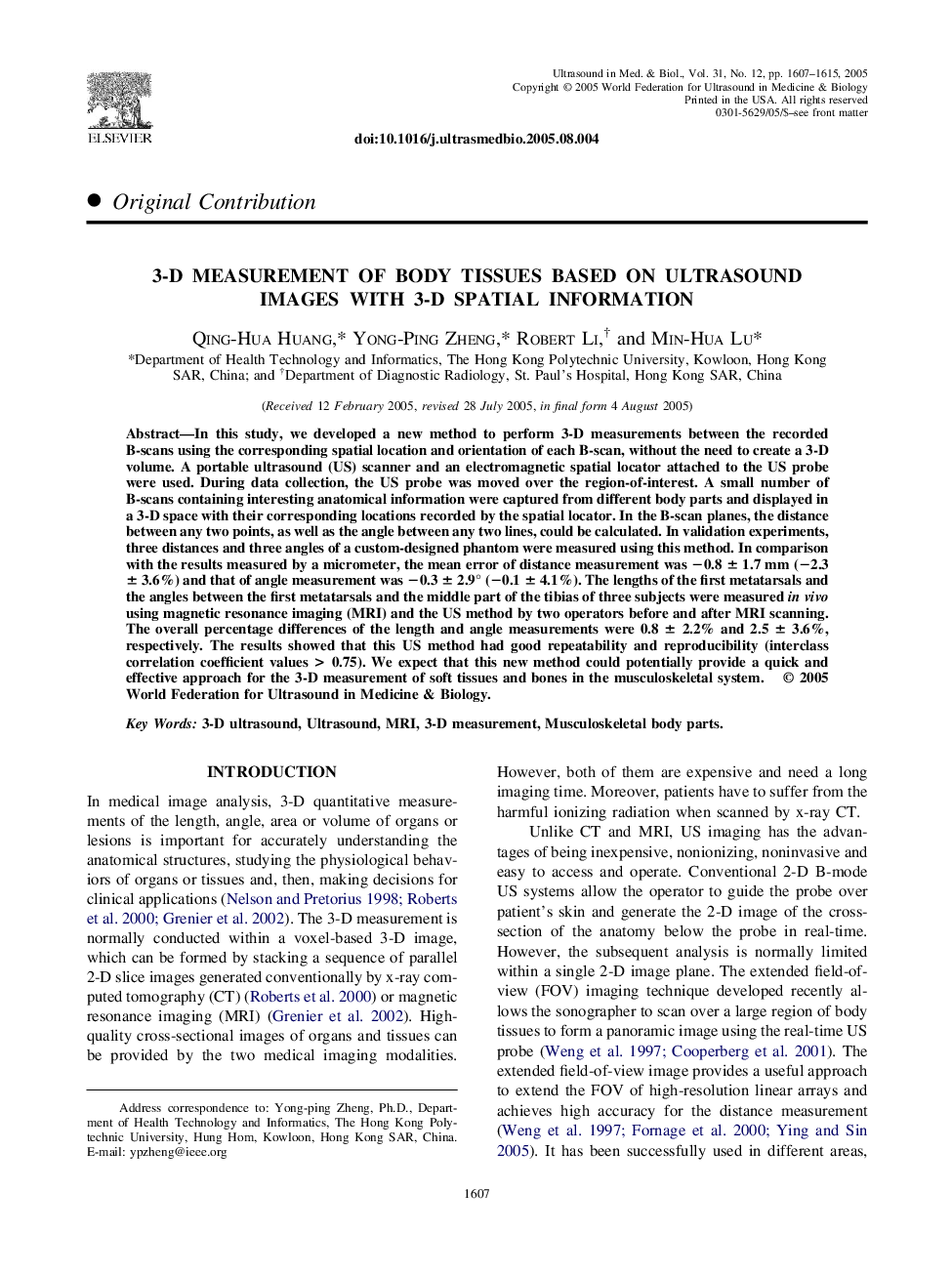| Article ID | Journal | Published Year | Pages | File Type |
|---|---|---|---|---|
| 10692405 | Ultrasound in Medicine & Biology | 2005 | 9 Pages |
Abstract
In this study, we developed a new method to perform 3-D measurements between the recorded B-scans using the corresponding spatial location and orientation of each B-scan, without the need to create a 3-D volume. A portable ultrasound (US) scanner and an electromagnetic spatial locator attached to the US probe were used. During data collection, the US probe was moved over the region-of-interest. A small number of B-scans containing interesting anatomical information were captured from different body parts and displayed in a 3-D space with their corresponding locations recorded by the spatial locator. In the B-scan planes, the distance between any two points, as well as the angle between any two lines, could be calculated. In validation experiments, three distances and three angles of a custom-designed phantom were measured using this method. In comparison with the results measured by a micrometer, the mean error of distance measurement was â0.8 ± 1.7 mm (â2.3 ± 3.6%) and that of angle measurement was â0.3 ± 2.9° (â0.1 ± 4.1%). The lengths of the first metatarsals and the angles between the first metatarsals and the middle part of the tibias of three subjects were measured in vivo using magnetic resonance imaging (MRI) and the US method by two operators before and after MRI scanning. The overall percentage differences of the length and angle measurements were 0.8 ± 2.2% and 2.5 ± 3.6%, respectively. The results showed that this US method had good repeatability and reproducibility (interclass correlation coefficient values > 0.75). We expect that this new method could potentially provide a quick and effective approach for the 3-D measurement of soft tissues and bones in the musculoskeletal system.
Related Topics
Physical Sciences and Engineering
Physics and Astronomy
Acoustics and Ultrasonics
Authors
Qing-Hua Huang, Yong-Ping Zheng, Robert Li, Min-Hua Lu,
